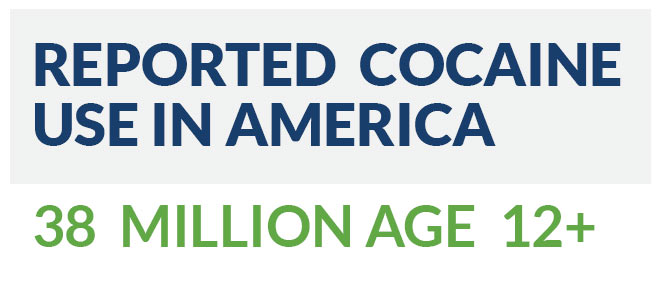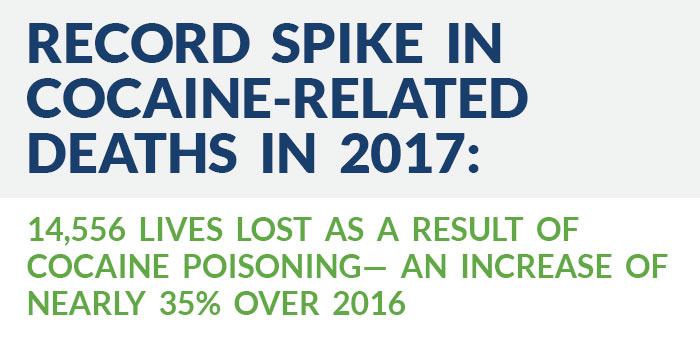Read the latest and greatest from our team
of incredible specialists.

Beach House Recovery Center » Blog » Cocaine and Xanax: A Dangerous Duo
Cocaine and Xanax are two popular drugs of abuse that are even deadlier when used in combination with one another. Even so, the practice of mixing “uppers” like cocaine (a potent stimulant) with “downers” like Xanax (a powerful sedative) is not uncommon among people with substance use disorders. This article will describe the health risks associated with using cocaine and Xanax to counteract or “balance out” the other’s side effects.

Cocaine is a potent, highly addictive stimulant narcotic derived from coca— a medicinal plant native to South America and used for centuries by indigenous tribes. Although Food and Drug Administration (FDA)-approved for legitimate medical use, such as for anesthesia, cocaine is recreationally abused and illicitly distributed, a practice called diversion.
In that growing global market for cocaine, the drug is available in powdered or freebase (crack) varieties and often mixed with cheaper, readily available substances like flour, cornstarch and talcum power to maximize profitability. It is also mixed with other deadly, unpredictable drugs like synthetic opioids (fentanyl) or amphetamines, which multiplies its addictive properties and greatly exacerbates the risk of overdose.
 According to the 2013 National Survey on Drug Use and Health (NSDUH), approximately 38 million Americans age 12 and over reported using cocaine in their lifetime. Other dire statistics from the Center for Disease Control (CDC) include a record spike in cocaine-related deaths in 2017, with 14,556 lives lost as a result of cocaine poisoning— an increase of nearly 35% over 2016.
According to the 2013 National Survey on Drug Use and Health (NSDUH), approximately 38 million Americans age 12 and over reported using cocaine in their lifetime. Other dire statistics from the Center for Disease Control (CDC) include a record spike in cocaine-related deaths in 2017, with 14,556 lives lost as a result of cocaine poisoning— an increase of nearly 35% over 2016.
Xanax (alprazolam), a fast-acting benzodiazepine “benzo,” is an anti-anxiety, anticonvulsant medication commonly used to treat seizures, insomnia and panic attacks. The drug is a highly addictive sedative associated with a variety of negative physiological and psychological effects. For this reason, it is typically prescribed for short-term use only, with maximum approved treatment lasting less than six weeks in the majority of cases. Recreationally abused and prevalent on the black market, Xanax is considered the “go-to” drug of choice by the anxiety-ridden and is particularly popular among socially vulnerable college students.
The Substance Abuse and Mental Health Services Administration (SAMSHA) reported approximately 8,000 benzo overdose deaths in 2014, a dramatic increase over the previous three years. Xanax is largely responsible for fueling this trend— with admissions to addiction treatment centers rising by approximately 80 percent over the past decade.
 The fleeting, intense high associated with cocaine use is produced by artificially elevating dopamine levels in the brain. The euphoria this flood of dopamine creates is initially perceived as highly desirable and manipulates the brain’s reward center, but at the cost of unintentionally rewiring brain chemistry and triggering a series of irreversible changes. The following adverse side effects frequently accompany cocaine use:
The fleeting, intense high associated with cocaine use is produced by artificially elevating dopamine levels in the brain. The euphoria this flood of dopamine creates is initially perceived as highly desirable and manipulates the brain’s reward center, but at the cost of unintentionally rewiring brain chemistry and triggering a series of irreversible changes. The following adverse side effects frequently accompany cocaine use:
Although initially effective in reducing anxiety and producing a potent sedative effect, excessive or extended Xanax use invariably alters brain function. Xanax achieves its nerve-calming powers by increasing the production of the neurotransmitter GABA, a brain chemical that deactivates nerve impulses leading to emotionally charged states as part of the parasympathetic nervous system. Benzos are known to decrease inhibitions and provoke dangerous impulsivity in heavy users— a phenomenon that leads to reckless driving, violent altercations with loved ones or strangers, unsafe sexual practices, depression and suicidal ideation. In addition to these potentially deadly consequences, Xanax may also produce lethargy and rapid weight gain as a result of the rebound effect it has on users, even after short-term use.
Combining an illicit narcotic with a particularly potent benzodiazepine is extremely unwise—irrespective of the reasons. If, individually, cocaine and Xanax represent bullets, improper mixture is a loaded gun. Beyond creating a higher propensity for polysubstance abuse, combining cocaine and Xanax also accelerates and intensifies brain damage. Once neurochemistry has been irreparably altered and the brain subjected to the roller coaster of changes associated with long-term abuse, it is only a matter of time before serious and debilitating social, professional and medical consequences follow. Chronic users frequently find themselves escalating toward a crisis point, after which time it is too late to return to normal autonomous functioning.
Healthy brain function depends upon striking a delicate balance between major neurotransmitters in conjunction with the central nervous system. Like a factory comprised of a billion mechanical parts, the brain requires well-oiled neural pathways and a regular dose of nutrient-supplied energy to operate. Inevitably, long-term cocaine and Xanax use depletes both, disrupting an entire neurochemical system in the process. The artificial manipulation of dopamine levels and GABA, however, are only one component involved in this destructive backlash effect. Permanent brain structures, including the prefrontal cortex, are also damaged as a result, with many users never recovering their innate mental faculties. Although other areas of the brain are adversely affected, this blow to the prefrontal cortex is particularly damaging since it controls rationality and impulse, a capacity known as “executive functioning.” Users then suffer from a diminished quality of life stemming from their inability to make informed, mature decisions and behave responsibly.
If you or someone you love is struggling with cocaine and/or Xanax addiction, consult a substance abuse professional today. The consequences of cocaine and Xanax abuse are lasting and serious and delaying treatment is never recommended. Taking immediate action could mean the difference between life and death—and the life you could be saving might be your own.
For more about cocaine and Xanax addiction and recovery, check out these related articles:
Sources:
Yale Journal of Biology and Medicine. Prescription Sedative Misuse and Abuse. Sept, 2015.
Journal of Addictive Medicine. A Review of Alprazolam Use, Misuse, and Withdrawal. Jan, 2018.
Blood Journal. Cocaine and the blood-brain-barrier. Oct, 2011.
American Heart Association Journals (AHA). Cardiovascular Effects of Cocaine. Dec, 2010.
British Journal of Clinical Pharmacology (BJCP). Alprazolam is relatively more toxic than other benzodiazepines in overdose. July, 2004.
Whether you’re researching for yourself or a loved one, Beach House can help. We understand that this is a serious time in your life and that the treatment center you choose matters. We want you to feel comfortable and empowered to make the right decision for yourself, a friend, or a family member. This is why a counselor is waiting and available to answer your questions and help put your mind at ease regarding the next steps. Many of the staff at Beach House have walked in your shoes. If you feel you’re ready or want more information about how to help a loved one, we can help today. You can also learn why we are voted the #1 rehab for addiction treatment in Florida.
We accept most major insurance plans and can verify your benefits quickly and confidentially.
We’re committed to helping you access the care you need, our admissions counselors can guide you through your coverage options and available resources.





"*" indicates required fields